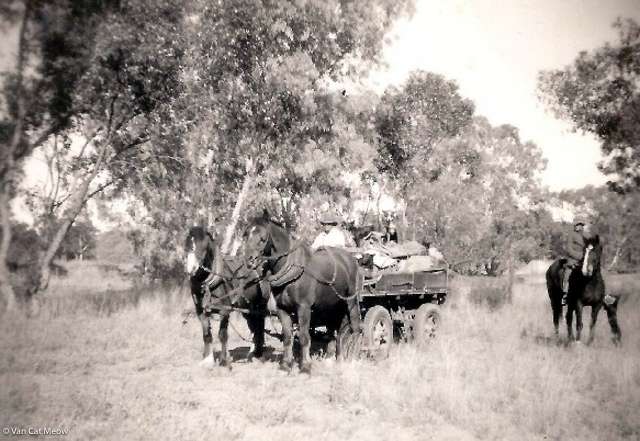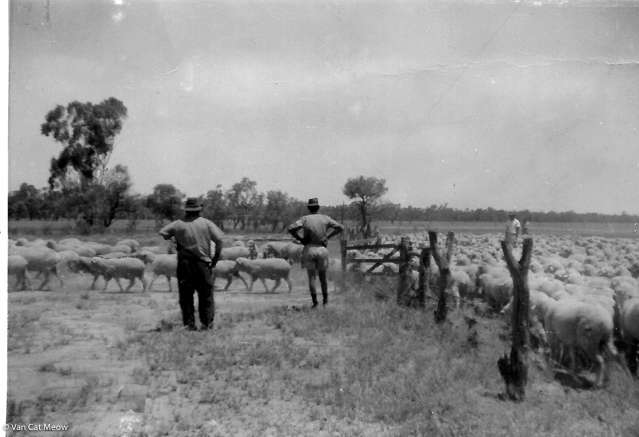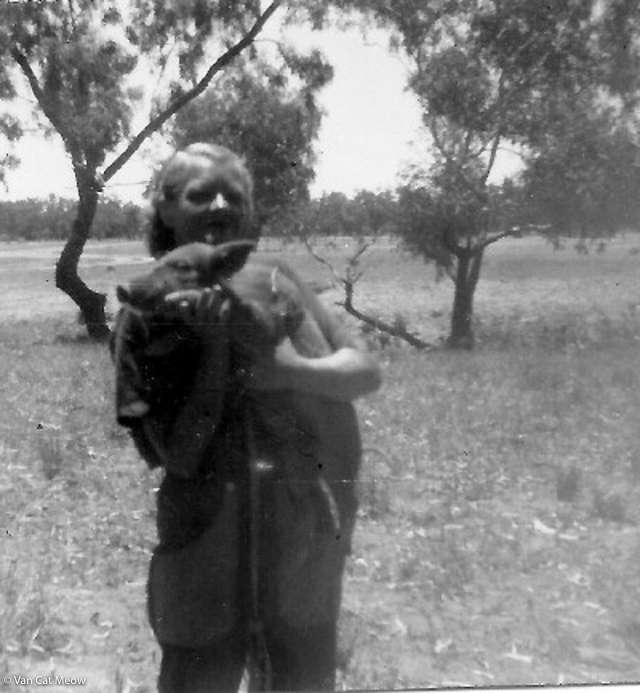This is the story of a grey tabby cat who travelled the stock routes of South-Western Queensland with her devoted owner, Marion.
When twelve-year-old Marion and her brother Bill arrived in Southport, Queensland in 1951, they were met with a world so dissimilar to their outback provenance of red earthed stock routes that one would be forgiven for thinking that each was at the other ends of the earth.
Southport in the 1950s was in the throws of a transformation as it cast away its fishing and farming beginnings and gave way to the bustling Gold Coast resort town we know today. Guest houses and hotels lined the shores and on any given weekend families would walk the pier with ice-creams and bathe in the waters sheltered by the Spit. Roller skaters showed off their moves to the music in the outdoor rink and all along the beach open-roofed busses deposited tourists at sandy stops.
Marion was quick to embrace her new playground and settled into life on the coast – but, there was one last adventure to be had in the outback, and an unlikely crew of four-legged friends to join her.
More Posts
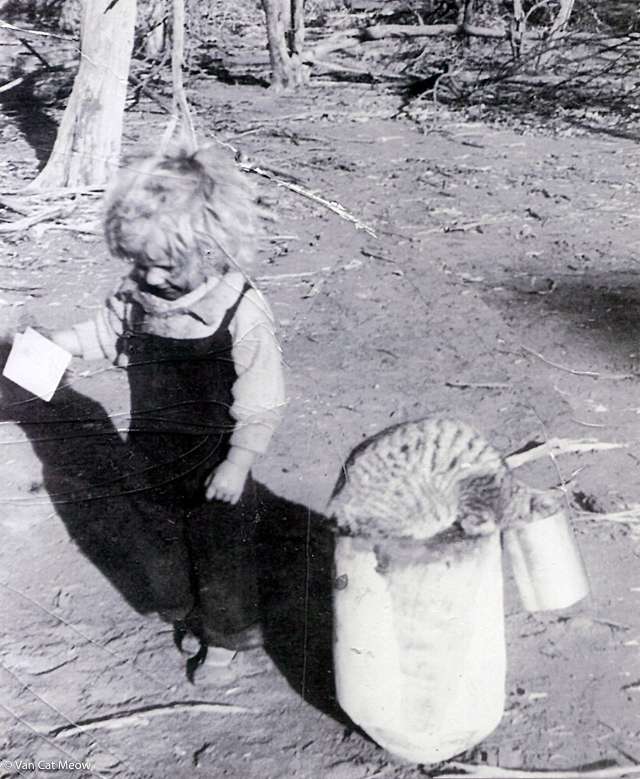
Life on the stock routes
So, that town at the other end of the earth? That was Cunnamulla – well actually it was just seven hundred and fifty kilometres West. West of the those pacific blue waters of Southport, over the verdant forests of the great dividing range, and passed the red earthed plateaus of mulga trees that eventually gave way to Channel Country and the rolling desert dunes.
It was there on the stock routes of Western Queensland and Northern NSW, with Cunnamulla as their base, that Marion and Bill were raised by their drover parents, Daisie and George Cox.
It would be fair to say that George had the outback in his blood. He came from a long line of pioneers and pastoralists, going back six generations to explorer William Cox who first opened up the Central Tablelands by building a road from Sydney to Bathurst in 1815.
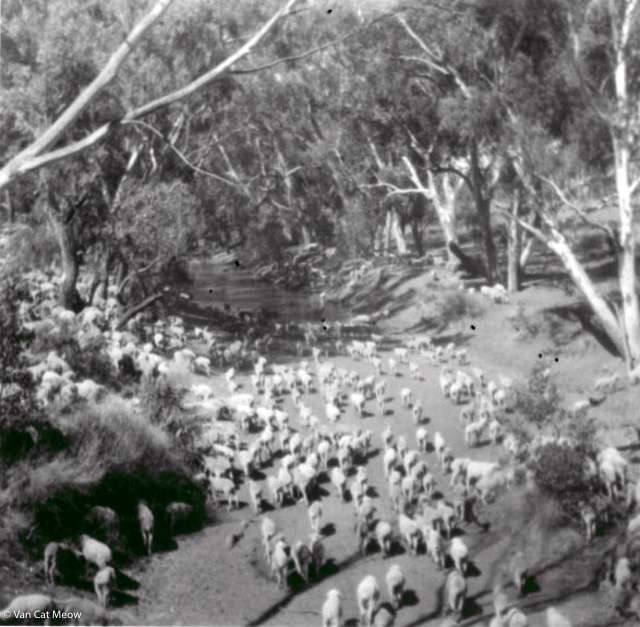
Long before trucks and road trains carted livestock across the outback, sheep and cattle were walked from one location to another by drovers. George was a drover; Daisie on the other hand was a Sydney socialite who had fled an unfortunate marriage, and everything she had known, to find herself in Longreach and possibly her destiny when she met George. Daisie was now a drover!
Marion was born in January 1939, and just 11 months later Bill arrived. A droving family was now complete. For all their preschool years together they would drove all over Western Queensland and NSW before they settled in Cunnamulla for their schooling. Bill could often be found with a paintbrush in his hand, depicting scenes of their outback life.
Now, at this point in the story I’m going to take you back to the pacific and that bustling town of Southport in the early 1950s. Although the droving life had been good to George it was a hard life nonetheless and Daisie knew it more than anyone. One thing she was certain of was that she did not want her daughter to marry a drover, so George, having acquired a taxi license, relocated the family to the coast. Drover became driver.
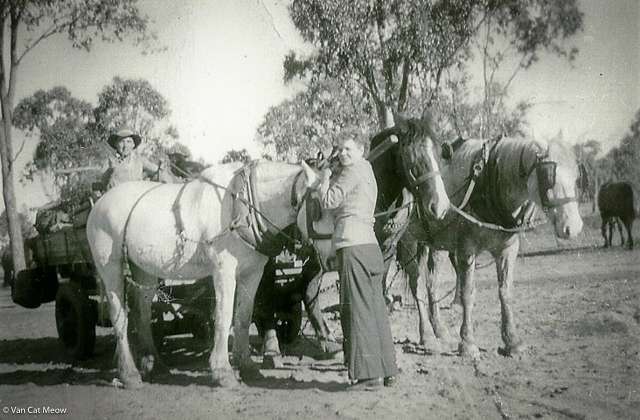
Now, I’m sorry to interrupt the flow of the story, but this is not where the tale ends, because – quite simply this is, in truth, the story of a cat and we are missing one furry faced protagonist in particular. Onto that in a moment.
It seemed that for George, being of outback blood, the pacific air was no good for his chest and in a few years found the outback calling him back. Though the life of a drover is a hard life, it can be an even lonelier one. So Daisie soon took the kids out of school in Southport and for one year, 1954, Marion, now 15, and Bill now 14, studied via correspondence on the outback stock routes.
For George, driver once again became drover, and together they were once again walking sheep up and down the country.
But, what about that cat?
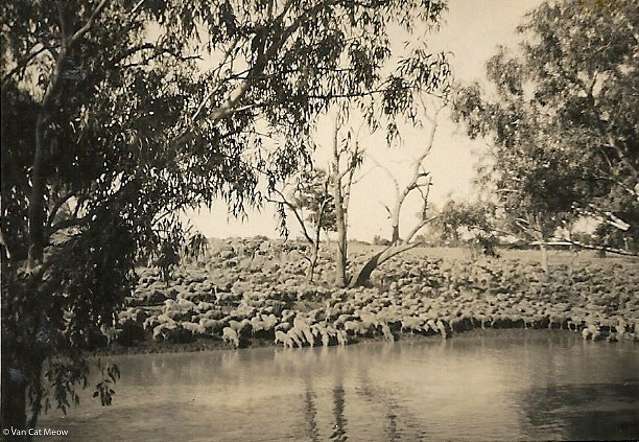
Since the late 1800s pioneers had been drilling boreholes into the Great Artesian Basin to tame the arid outback and provide water for their livestock. When the stock routes intersected and a good water source could be found you could guarantee that a town was born. Now in the postwar era, with a burgeoning wool industry many of these outback towns were in their heyday – well-serviced with civic centres, swimming pools, and even picture theatres. However, the luxuries of town life were not apparent for Marion and her family when they were out droving.
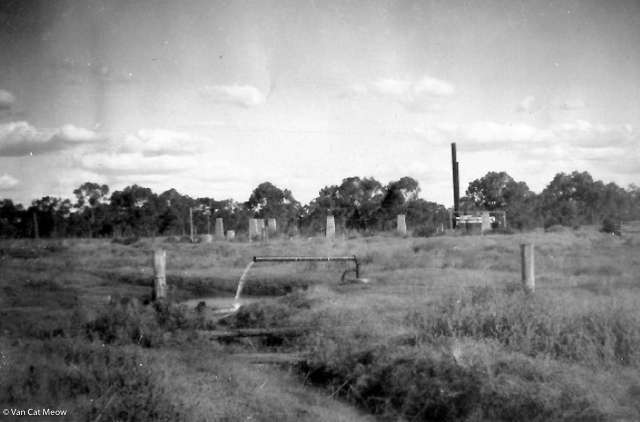
In April, they were camped on the Eastern outskirts of Charleville next to the 4 Mile Bore and the remains of an old wool scour. It was here that Bill found something. On the side of the bore drain, as it meandered away from the bore head, a little face emerged from the saltbush – the face of a grey tabby kitten. It seems as though someone from town had dumped the poor little thing at the bore site. The cat was frightened and alone until Bill reached down and picked it up, cradling it in his hands as he brought it to show the others.
As Marion and her parents gathered around,Bill held the luckless kitten in front of them. The two kids appealed for the future of the scruffy bore urchin as Daisie and George considered their request.
One thing that should be noted is that the success of a drover is largely dependent on not only their own discipline and horsemanship, but also the willingness and expertise of their team – how exactly a cat could be painted into that picture was unknown to Daisie and George when they foolishly agreed that the cat could stay. Marion was appointed its guardian.
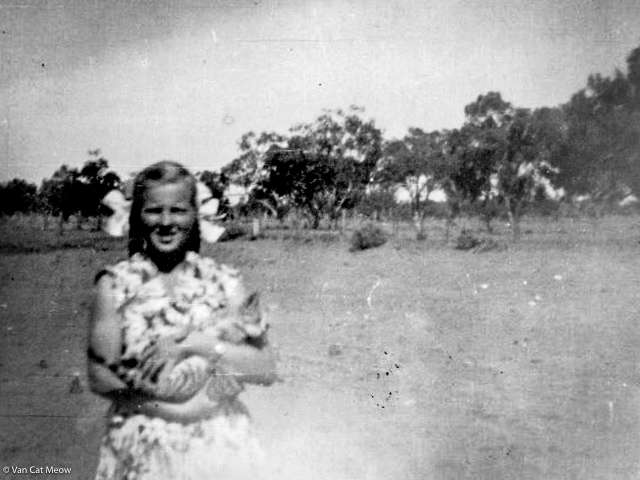
It was soon established that the kitten was in fact a girl. Daisie suggested she be named Tit-for-Tat, which Marion soon shortened to Tit-fa. And so, this is the story of how a bore cat became a drover cat – but again, this is not where the tale ends for there was one big adventure to come.

Tit-fa on the stock routes
Tit-fa started her life on the stock routes and got to meet the rest of her team. There were 5 or so horses – two of which would draw the wagonette – and there were kelpies and cattle dogs, who didn’t much bother with the little cat. There was the shepherd – a young bloke named Peter from Southport that George had enlisted, and there was a horse tailor. Oh, and there were five thousand sheep.
They left Charleville and headed South, but not before picking up two additional mares to join their entourage. They were put to use drawing the wagonette, however, just weeks into the trip it was discovered that each was pregnant. Maternity leave was granted to both but they remained with the team.
They also had a brand new 53′ FJ Holden. Having only been taught to drive the previous year by her mother on the back blocks of Southport, it was Marion’s responsibility to scout ahead on the stock route to find a suitable camp site. Tit-fa, of course, would be riding shotgun.
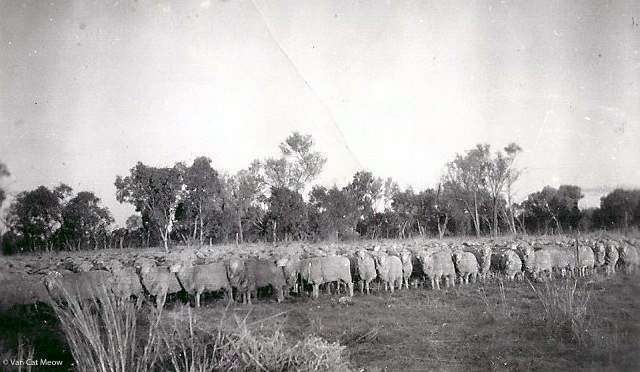
As a drover, George preferred working with sheep for one main reason – they didn’t need to be watched overnight, which meant a better nights sleep. Though, the downside was that they could only walk about 10km a day (whereas cattle could cover about 16km). At the end of each day, Daisie and the horse tailor would arrive in the wagonette to the camp chosen by Marion. It was the horse tailor’s responsibility to help set up camp and build the sheep break for when Bill, George, and Peter arrived with the stock. This was done with rope and iron stakes, but at some camps brush breaks were utilised, which had been constructed from tree branches.
The men slept in swags on the ground by the wagonette while Marion and her mother slept on the folded down seats of the FJ Holden. In between them nestled a little tabby cat.
Travelling only 10km a day meant it took over 40 nights to reach their destination of Enngonia in NSW. There they dropped off a flock of sheep before they travelled back into Queensland to pickup the next flock. Their new destination was Quilpie, West of the Warrego.
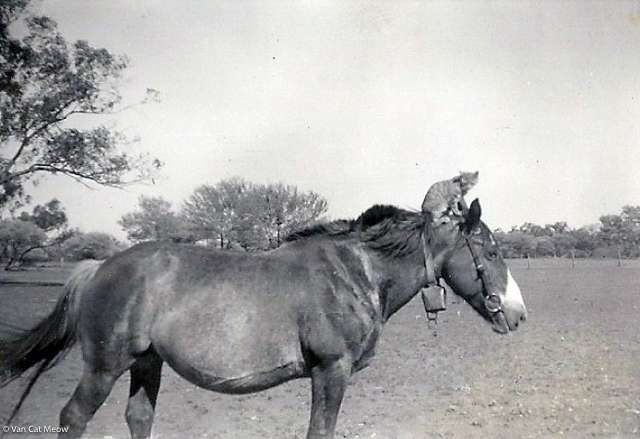
The two now very pregnant mares were named Poddy and Creamy. Poddy was a spectacular blue roan colour and Creamy was as her name suggests. Each had a gentle temperament and rather than hobble their legs at night, a bell was used to find them in the mornings. Tit-fa, as composed as she was, would happily sit on Poddy’s head.
Poddy gave birth to a red roan named Roany soon after they crossed the border, and just days later Creamy produced a cream foal named Stormy – named after the weather they endured that night on the Warrego River.
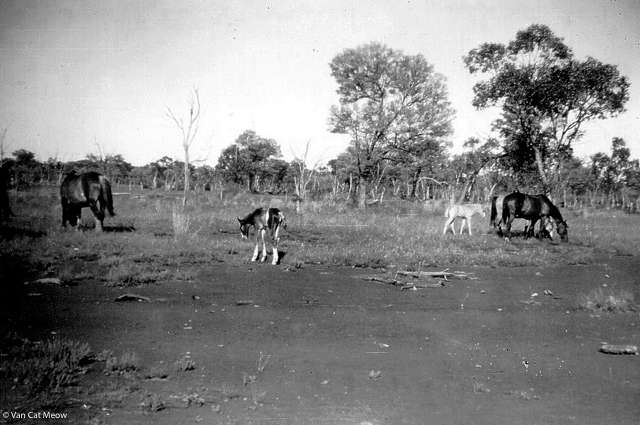
Down the rabbit hole
It could be said that at this stage in her trip, Tit-fa had well and truly settled into her new droving lifestyle. The rules were simple; don’t upset the working dogs, breakfast was served early, and night time was for sleeping – but most of all.. do not stray too far! So it was with much surprise that Marion woke up one morning at their camp on the Warrego near Barringun to find that Tit-fa had broken the last two of those rules.
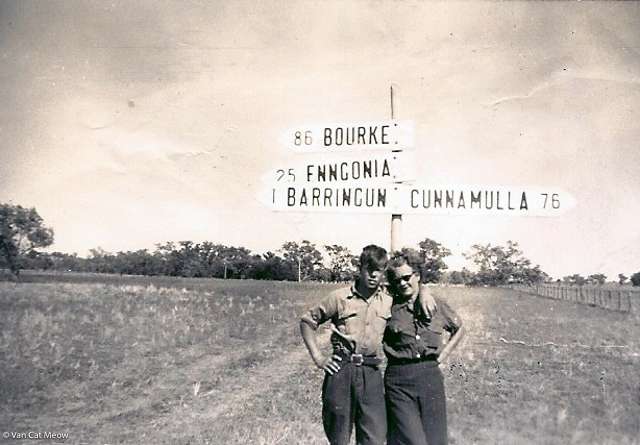
The outback sun strew through the mulga as it rose and everyone in the camp prepared for their departure. But as she searched around the camp and noticed the wound down window of the FJ Holden left over night, it was clear to Marion that Tit-fa had other plans.
The sand hills that they were camped upon were riddled with rabbit holes – too many to count – and as Marion continued her unavailing search, the rest of the party were now ready to leave. A days work was ahead of them and as every drover’s child learns, work always remains to be done. So it was with a broken heart that Marion got into the car that Tit-fa had vanished from just hours before, and went out to scout for the parties next camp.
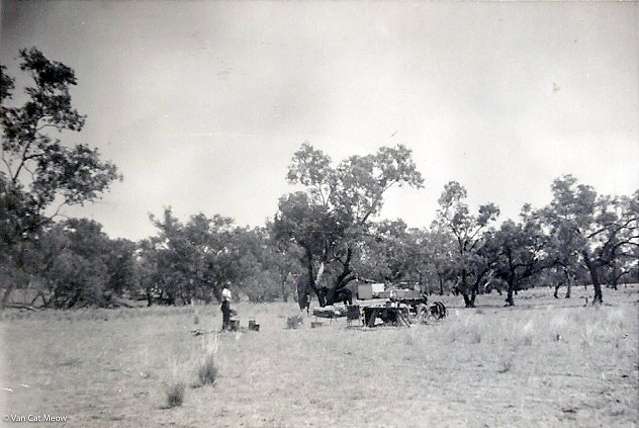
Woe is the river
The Warrego River runs from the Carnarvon Ranges in Central Queensland for over 800km to where it joins the Darling River in North-Western NSW near Bourke. As an intermittent river the Warrego could be best described as a series of lengthy billabongs that provide a critical system of watering sites for the stock route that follows its path. Although flood events will place the river in full flow, the river could well have filled with the tears of a young girl who had just lost her cat.
Daisie arrived in the wagonette with Peter an hour or so after Marion had scouted that night’s camp. The camp wasn’t dissimilar to the last, though there was something amiss. Daisie realised her daughter’s distress and in that moment understood the bond the two shared. Today, her work could wait. She sent Marion back with the car to pick up Bill to look for her beloved cat – for if there was a chance Tit-fa could be found then that was a chance worth taking.
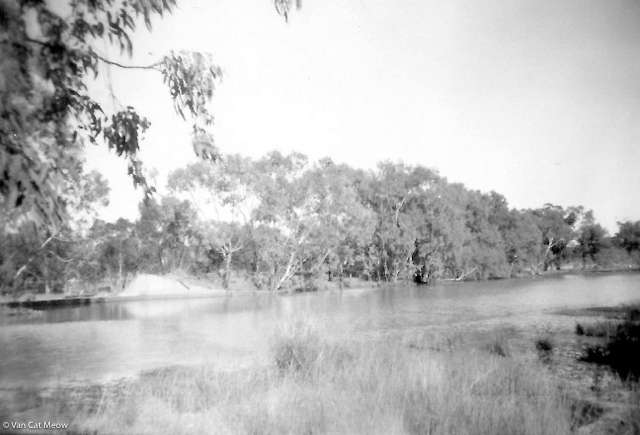
The FJ Holden sprang and jolted along the dusty corrugated track as the kids made their way back with eyes fixed ahead. They pulled into a nearby station homestead and asked if there had been any sightings of the absentee – but there was not.
They returned to the old camp and to the sand hills which taunted them with endless rabbit holes. Though, seconds after they had pulled up, a very familiar, albeit dusty face ran towards them.
It was Tit-fa and they were reunited at last.
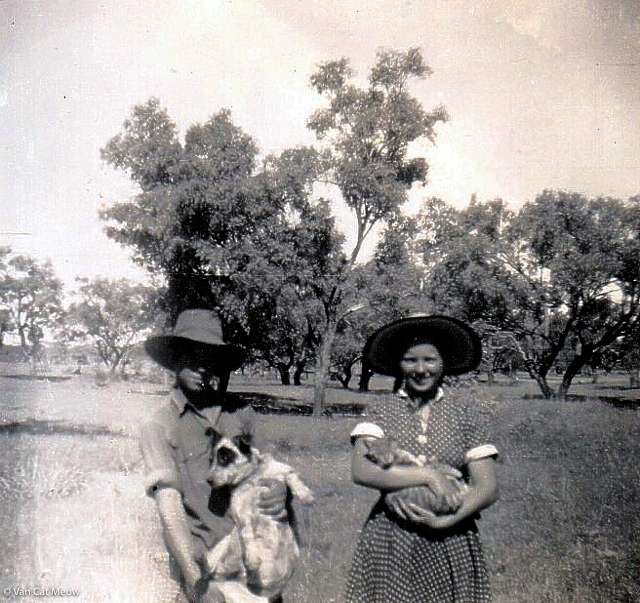
New friends
Marion did not let Tit-fa out of her sight for the rest of the trip. Wherever she went Tit-fa would follow. It also helped that Tit-fa had made some friends – a pair of motherless piglets named Sammy and Sarah and an orphaned lamb named E-we – all along on the adventure. Tit-fa and the piglets would even share the same water bowl which happened to be an old hubcap.
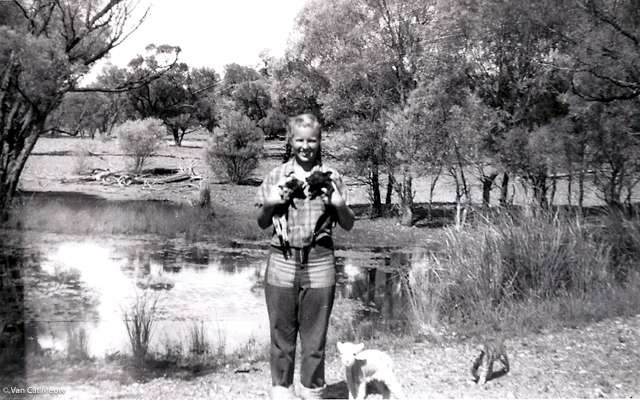
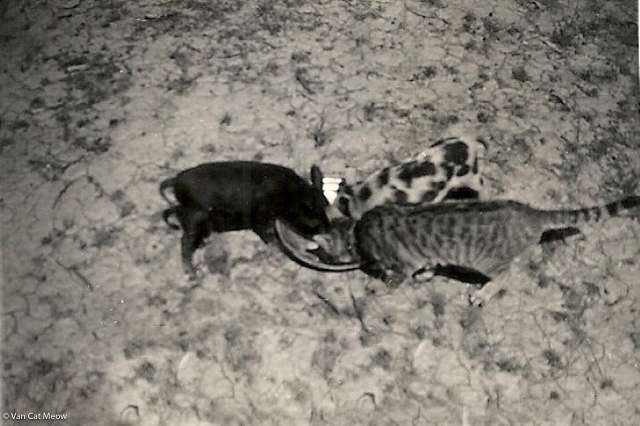
Many weeks later they arrived at the sheep station outside of Quilpie to deliver the flock. Just Marion, her brother, Mum and Dad, 5 horses, 2 foals, 2 piglets, a motherless lamb, a little tabby cat, and five thousand sheep.
George landed another job which took them up past Muttaburra, North of Longreach. So there they travelled.
Tit-fa posed honourably atop the sign when they passed the Tropic of Capricorn – a notable achievement for any cat. Marion set up the photo as a testament to the wide travels of her little drover cat.
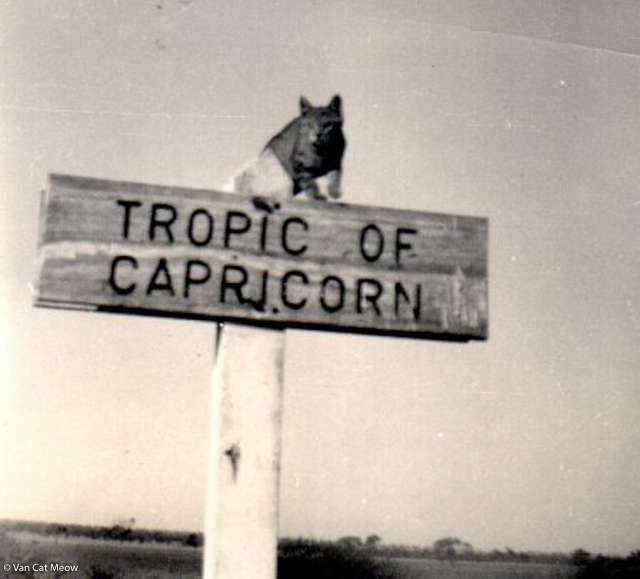
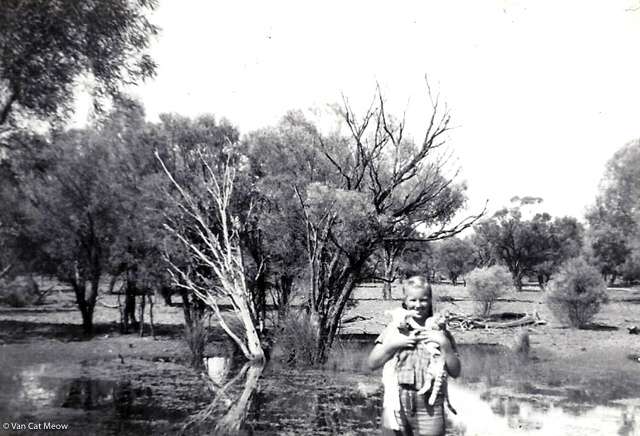
The rest of their trip elapsed and so too did the year, and soon enough it was time for Marion and Bill to return to Southport – but not without one special friend. Tit-fa, the once bore cat, the drover cat, and the fell-down-the-rabbit-hole cat, was now a Gold Coast cat and it was there she lived out the rest of her days in sunny Southport.
So, when you next meet a cat curled up in the sun, who could know for sure the lives they have lived. As for Tit-fa the drover cat, to anyone who ever questioned her story, Marion could show them the photos.
* * *
Marion returned to Southport with Bill and went on to study nursing. Her mother was pleased when, instead of marrying a drover, she married a driver – Glen Millar, who later had a distinguished career driving for the Queensland Governor.
As for Bill, it wasn’t long into adulthood that he returned to the outback, and amongst other things, developed as an accomplished artist. His impressions made all over the outback in his sign writing, mural painting, and landscapes.
And, how do I know all this? Well I had the privilege of hearing it first hand when I visited Marion and Glen in their Brisbane home.
* * *
I would like to thank Marion for being so generous with her time on this story. To have kept these photos to show others what life was like back then is an absolute treasure.

